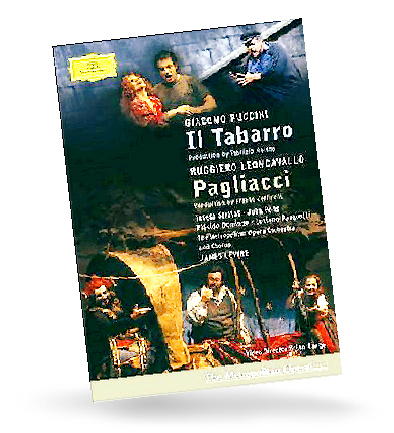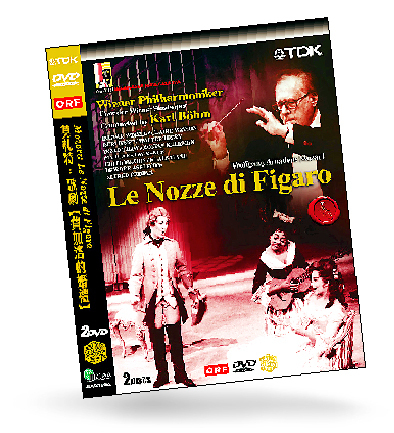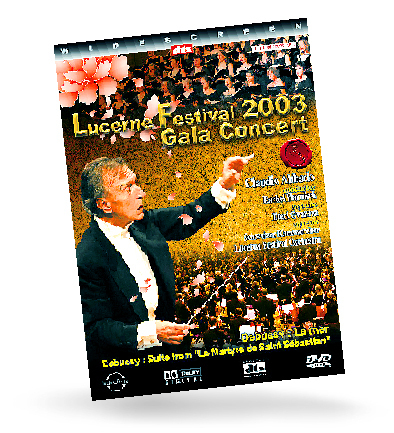Two one-act operas, Il Tabarro (the cloak) and Pagliacci (clowns), in live versions from the Metropolitan Opera in 1994, make for strong viewing and heroic listening. They were recorded when the New York company under James Levine was at its peak. Teresa Stratas and Juan Pons star in both, with Domingo in the first and Pavarotti in the second. Together these works offer a triumphant two hours.
Il Tabarro is the lesser of the two works. Yet, due in particular to Juan Pons's muted portrayal of the deceived husband Michele, Puccini's vignette of life among barges on the Paris quays packs a considerable punch. Placido Domingo is appropriately bitter and forceful as the radical laborer Luigi, and his aria Hai ben ragione; meglio non pensare rightly draws intense applause. Stratas, too, is totally convincing as the unfaithful wife (a role she has to shoulder in both mini-operas), and Florence Quivar as the second female role, La Frugola, is also excellent.
Pons really does display himself as a true master in both these items, broodingly physical, but with a voice that's magnificent in all registers. In Leoncavallo's Pagliacci he plays Tonio. He opens the opera by coming out in front of the Met's curtains, exactly as his character is supposed to do, and the prologue-aria he there delivers is so strong and moving that he not only wins an ovation but takes an individual curtain-call to acknowledge it. When Pavarotti does the same after `Vesti, la giubba' you feel he is determined not to be out-classed by his co-star (and rival) in the production.

This Pagliacci shows the famous Zeffirelli production that was the basis of the 1982 film (also excellent). Pons and Stratas repeat their film roles on stage, and the major difference is that Canio, this particular opera's betrayed husband, is sung by Domingo in the movie, but here by Pavarotti. I actually preferred this stage version -- it retains Zeffirelli's inventiveness while being grander and even more passionate. The colors alone are endlessly pleasurable, both subtle and clearly-defined through-out. In Zeffirelli's usual manner, the chorus members are all individually-crafted. People, you feel he's saying, are not to be down-graded, in art as in life, simply because they don't play major public roles.
All in all, while Il Tabarro is strong in the detailed realistic style Puccini wanted, it's the Pagliacci that's the treasure all collectors will want to acquire. Both operas were filmed, originally for video, by Brian Large, itself a virtual guarantee of visual excellence throughout.
With Mozart's Le Nozze di Figaro opening in Taipei tomorrow, this is an appropriate time for a historic production of the opera to emerge in Taiwan from Jingo (www.jingo.com.tw). Filmed in 1966 in black-and-white at the Salzburg Music Festival, it's a remarkable record of what was then a stellar line-up. Karl Bohm conducting the Vienna Philharmonic, Ingvar Wixell as the Count, Claire Watson as the Countess, Walter Berry as Figaro and Reri Grist as Susanna -- all are outstanding. The details of the complex plot are made very clear, though Don Curzio's stuttering, so brilliantly incorporated into the music by Mozart, is barely audible. This is a rendering with very many pleasures to offer. Thankfully the beautiful "Canzonetta sull" aria in Act Three is taken very slowly, in the old style.

Also from Jingo is a DVD film telling Verdi's life story. The title, Fly Thoughts, On Golden Wings, is taken from a famous chorus in his opera Nabucco (Nebuchadnezzar). Known as the Chorus of the Hebrew Slaves and beginning "Va, pensiero" (Go, thoughts), it became a virtual anthem for Italy's unification movement, the Risorgimento. It was considered Verdi's personal signature, and was sung by the 300,000 people who lined the streets at his funeral in Milan in 1901.
Here the US baritone Thomas Hampson provides the narration and sings half a dozen arias while standing in historic settings associated with Verdi's life. You learn about his relatively humble origins, his lifelong love of the featureless local countryside where he was born, his ambiguous attitude to Paris, his long relationship with Giuseppina Strepponi (who he lived with for over a decade before marrying) and some of his numerous successes. This, though necessarily brief, is an appropriate introduction to Verdi for all newcomers to his art.
Saint Sebastian, pierced to death with arrows, served for long as a secret gay icon, a symbolism resurrected in 1976 by Derek Jarman in his cult film Sebastiane. Gabriele D'Annunzio's text for Debussy's Martyrdom of St Sebastian (1911) was actually put on the Index of banned works by the Vatican. Since then the "sacred mystery play" has been largely neglected, and it's good to see a selection from it resurrected in concert form at the Lucerne 2003 Festival. The music is by turns eerie and lugubrious, it's atmospherically played by the Lucerne Festival Orchestra under Claudio Abbado, and the recorded sound-quality is excellent.

Debussy's well-known symphonic poem La Mer completes the program.


Desperate dads meet in car parks to exchange packets; exhausted parents slip it into their kids’ drinks; families wait months for prescriptions buy it “off label.” But is it worth the risk? “The first time I gave him a gummy, I thought, ‘Oh my God, have I killed him?’ He just passed out in front of the TV. That never happens.” Jen remembers giving her son, David, six, melatonin to help him sleep. She got them from a friend, a pediatrician who gave them to her own child. “It was sort of hilarious. She had half a tub of gummies,

June 23 to June 29 After capturing the walled city of Hsinchu on June 22, 1895, the Japanese hoped to quickly push south and seize control of Taiwan’s entire west coast — but their advance was stalled for more than a month. Not only did local Hakka fighters continue to cause them headaches, resistance forces even attempted to retake the city three times. “We had planned to occupy Anping (Tainan) and Takao (Kaohsiung) as soon as possible, but ever since we took Hsinchu, nearby bandits proclaiming to be ‘righteous people’ (義民) have been destroying train tracks and electrical cables, and gathering in villages

The wide-screen spectacle of Formula One gets a gleaming, rip-roaring workout in Joseph Kosinski’s F1, a fine-tuned machine of a movie that, in its most riveting racing scenes, approaches a kind of high-speed splendor. Kosinski, who last endeavored to put moviegoers in the seat of a fighter jet in Top Gun: Maverick, has moved to the open cockpits of Formula One with much the same affection, if not outright need, for speed. A lot of the same team is back. Jerry Bruckheimer produces. Ehren Kruger, a co-writer on Maverick, takes sole credit here. Hans Zimmer, a co-composer previously, supplies the thumping

Swooping low over the banks of a Nile River tributary, an aid flight run by retired American military officers released a stream of food-stuffed sacks over a town emptied by fighting in South Sudan, a country wracked by conflict. Last week’s air drop was the latest in a controversial development — private contracting firms led by former US intelligence officers and military veterans delivering aid to some of the world’s deadliest conflict zones, in operations organized with governments that are combatants in the conflicts. The moves are roiling the global aid community, which warns of a more militarized, politicized and profit-seeking trend